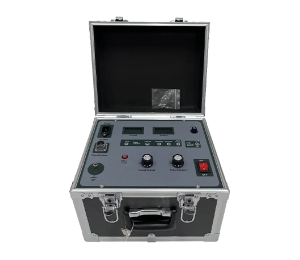 English
English



-
 Afrikaans
Afrikaans -
 Albanian
Albanian -
 Amharic
Amharic -
 Arabic
Arabic -
 Armenian
Armenian -
 Azerbaijani
Azerbaijani -
 Basque
Basque -
 Belarusian
Belarusian -
 Bengali
Bengali -
 Bosnian
Bosnian -
 Bulgarian
Bulgarian -
 Catalan
Catalan -
 Cebuano
Cebuano -
 China
China -
 China (Taiwan)
China (Taiwan) -
 Corsican
Corsican -
 Croatian
Croatian -
 Czech
Czech -
 Danish
Danish -
 Dutch
Dutch -
 English
English -
 Esperanto
Esperanto -
 Estonian
Estonian -
 Finnish
Finnish -
 French
French -
 Frisian
Frisian -
 Galician
Galician -
 Georgian
Georgian -
 German
German -
 Greek
Greek -
 Gujarati
Gujarati -
 Haitian Creole
Haitian Creole -
 hausa
hausa -
 hawaiian
hawaiian -
 Hebrew
Hebrew -
 Hindi
Hindi -
 Miao
Miao -
 Hungarian
Hungarian -
 Icelandic
Icelandic -
 igbo
igbo -
 Indonesian
Indonesian -
 irish
irish -
 Italian
Italian -
 Japanese
Japanese -
 Javanese
Javanese -
 Kannada
Kannada -
 kazakh
kazakh -
 Khmer
Khmer -
 Rwandese
Rwandese -
 Korean
Korean -
 Kurdish
Kurdish -
 Kyrgyz
Kyrgyz -
 Lao
Lao -
 Latin
Latin -
 Latvian
Latvian -
 Lithuanian
Lithuanian -
 Luxembourgish
Luxembourgish -
 Macedonian
Macedonian -
 Malgashi
Malgashi -
 Malay
Malay -
 Malayalam
Malayalam -
 Maltese
Maltese -
 Maori
Maori -
 Marathi
Marathi -
 Mongolian
Mongolian -
 Myanmar
Myanmar -
 Nepali
Nepali -
 Norwegian
Norwegian -
 Norwegian
Norwegian -
 Occitan
Occitan -
 Pashto
Pashto -
 Persian
Persian -
 Polish
Polish -
 Portuguese
Portuguese -
 Punjabi
Punjabi -
 Romanian
Romanian -
 Russian
Russian -
 Samoan
Samoan -
 Scottish Gaelic
Scottish Gaelic -
 Serbian
Serbian -
 Sesotho
Sesotho -
 Shona
Shona -
 Sindhi
Sindhi -
 Sinhala
Sinhala -
 Slovak
Slovak -
 Slovenian
Slovenian -
 Somali
Somali -
 Spanish
Spanish -
 Sundanese
Sundanese -
 Swahili
Swahili -
 Swedish
Swedish -
 Tagalog
Tagalog -
 Tajik
Tajik -
 Tamil
Tamil -
 Tatar
Tatar -
 Telugu
Telugu -
 Thai
Thai -
 Turkish
Turkish -
 Turkmen
Turkmen -
 Ukrainian
Ukrainian -
 Urdu
Urdu -
 Uighur
Uighur -
 Uzbek
Uzbek -
 Vietnamese
Vietnamese -
 Welsh
Welsh -
 Bantu
Bantu -
 Yiddish
Yiddish -
 Yoruba
Yoruba -
 Zulu
Zulu
short circuit test of three phase transformer
Short Circuit Test of Three-Phase Transformers
The short circuit test is an essential procedure used in the evaluation of three-phase transformers, allowing engineers to determine several important parameters without the need for full-load tests. This test is primarily designed to assess the transformer’s impedance, losses, and efficiency under short circuit conditions, thereby helping in the performance analysis of the transformer.
Objective of the Short Circuit Test
The primary objective of the short circuit test is to measure the equivalent circuit parameters of the transformer, including the series impedance. By applying a reduced voltage to the primary side of the transformer while keeping the secondary side shorted, engineers can determine the short circuit impedance and losses at a level much safer and more controlled than typical operational conditions. This is vital for ensuring that designs meet specifications and expectations regarding efficiency and thermal performance.
Test Procedure
During the short circuit test, the procedure involves several key steps 1. Setting Up the Experiment The transformer is connected with its secondary terminals short-circuited. The primary side is then supplied with a reduced voltage, typically around 5-10% of the rated voltage, sufficient to circulate full-load current through the primary winding while ensuring safety. 2. Voltage and Current Measurement Instruments are used to record the voltage applied to the primary terminals and the current flowing through the system. Additionally, it is important to measure the power consumed during the test to determine the copper losses (I²R losses) that occur within the transformer due to the flow of current.
short circuit test of three phase transformer

3. Calculating Parameters The data collected, including voltage, current, and power, is used to calculate the per-unit system values, including the short circuit impedance (Z) given by \(Z = \frac{V_{sc}}{I_{sc}}\), where \(V_{sc}\) is the applied short circuit voltage and \(I_{sc}\) is the short circuit current. Additionally, the copper losses can be evaluated from the power consumption during the test.
Importance of Results
The results obtained from the short circuit test are pivotal for several reasons - Impedance Determination The short circuit impedance value is crucial for calculating the voltage regulation of the transformer, which is important for maintaining stable performance during load fluctuations. - Losses Evaluation By identifying the copper losses, engineers can optimize the transformer design, selecting materials and winding configurations that minimize inefficiencies.
- Thermal Considerations Understanding the heat generated due to short circuit conditions helps in determining the cooling requirements and overall thermal management strategies for the transformer under fault conditions.
Conclusion
The short circuit test of a three-phase transformer not only verifies the transformer's operational integrity but also significantly contributes to the efficiency and reliability of power systems. This test offers valuable insight into impedance characteristics and loss factors, which are essential for the effective operation and maintenance of transformers in various applications. Properly conducted, it serves as a diagnostic tool to predict behavior under fault conditions, ensuring that transformers will perform optimally throughout their operational lifespan. As power demands continue to grow, such efficiency-focused evaluations become increasingly vital in the design and maintenance of electrical infrastructure.
-
Testing Equipment Industry Sees Major Advancements in 2025: Smart & Precision Technologies Lead the WayNewsJun.06,2025
-
Applications of Direct Current Generators in Renewable Energy SystemsNewsJun.05,2025
-
Hipot Tester Calibration and Accuracy GuidelinesNewsJun.05,2025
-
Digital Circuit Breaker Analyzer Features and BenefitsNewsJun.05,2025
-
Benefits of Real-Time Power Quality Monitoring Devices for Industrial EfficiencyNewsJun.05,2025
-
Earth Fault Loop Testing in High-Rise Building Electrical SystemsNewsJun.05,2025



